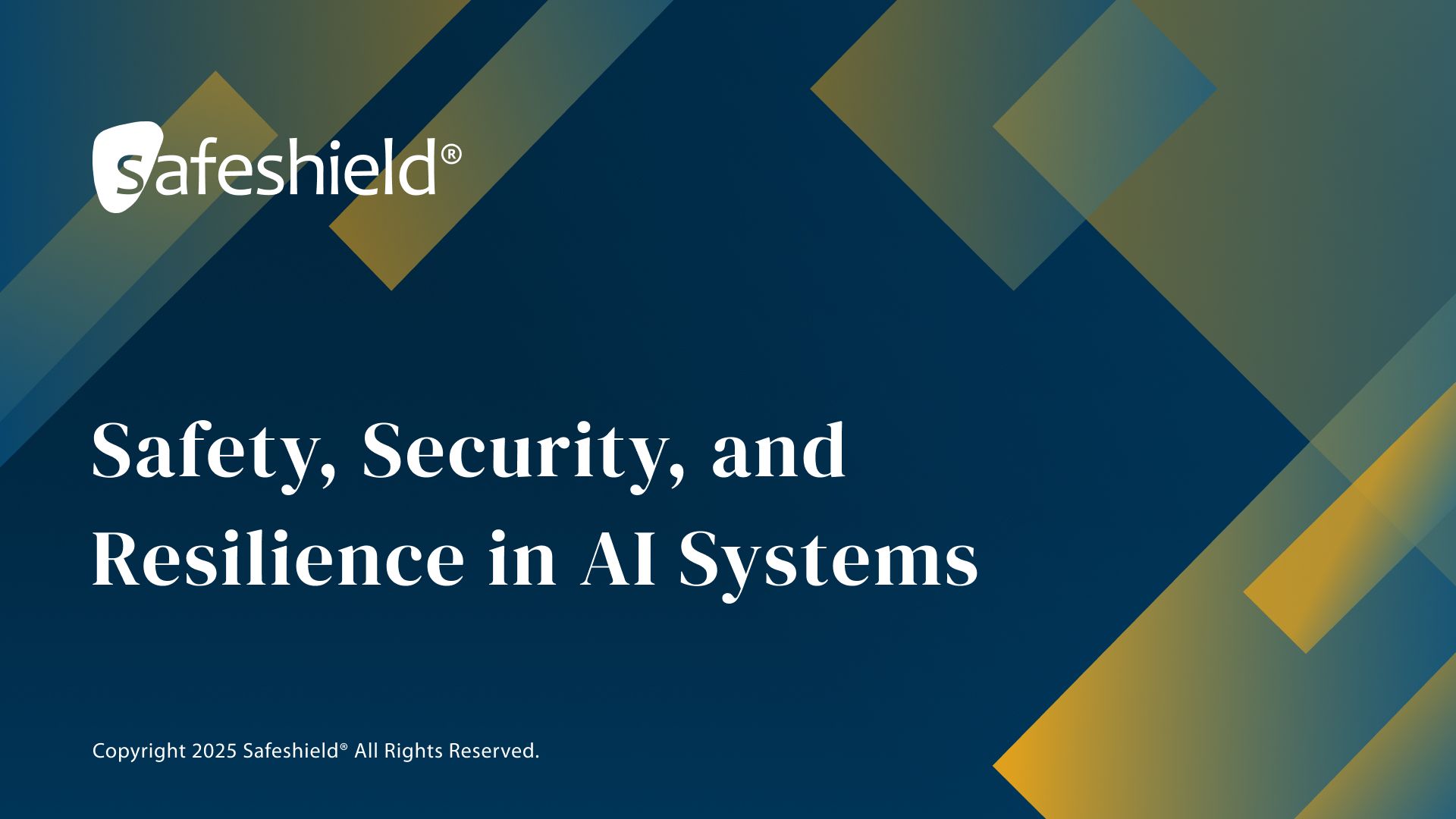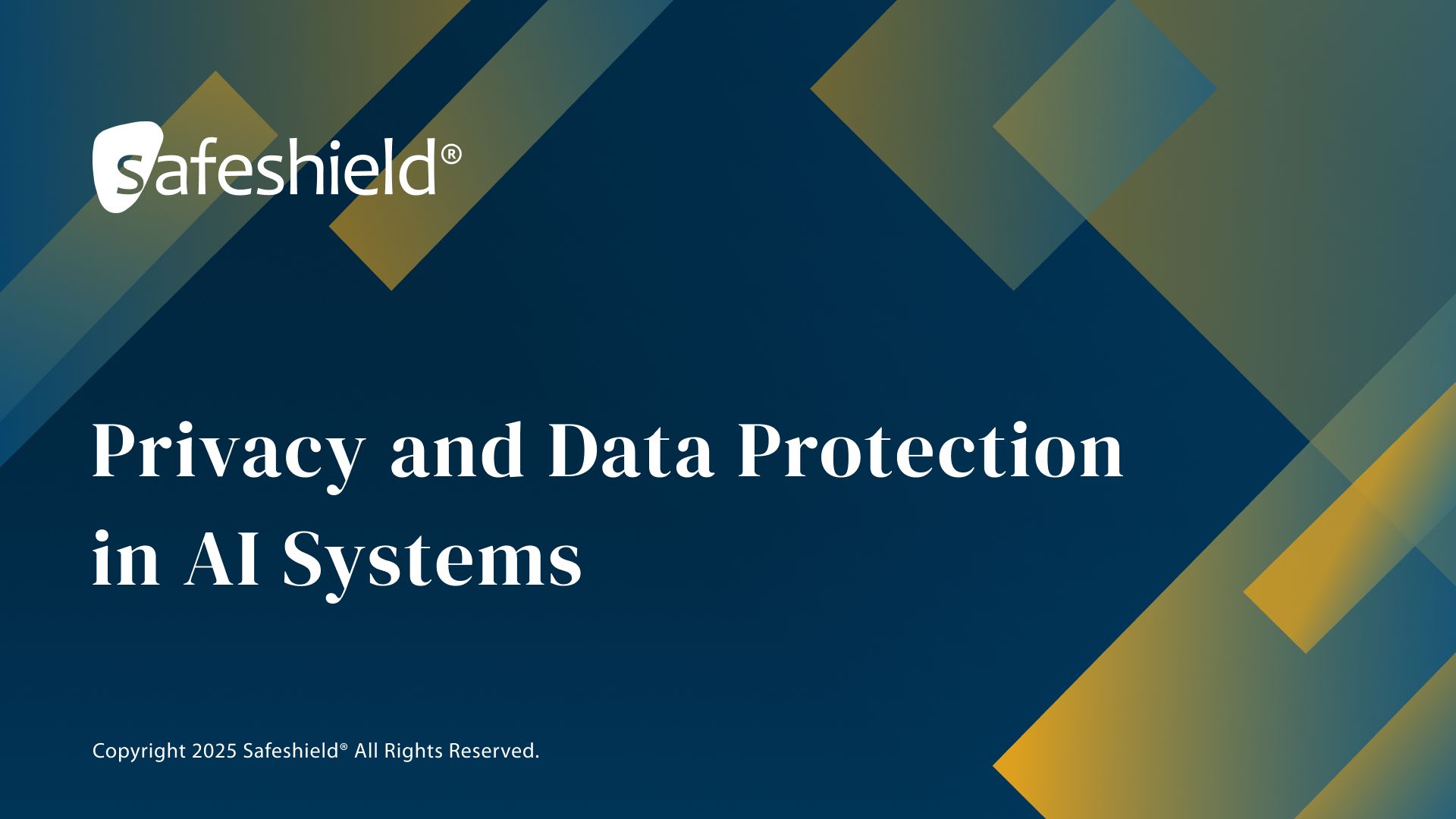ISO/IEC 42001 Made Simple: Building the Right AI Governance Team
September 2, 2025
Artificial intelligence (AI) is no longer a “future” technology. It’s embedded in everyday business processes, decisions, and customer interactions. While its potential is enormous, so are its risks. From biased algorithms to regulatory breaches, organizations must manage AI with the same rigor as any other mission-critical system.
The ISO/IEC 42001 standard — the first international standard for AI management systems (AIMS) — provides a framework for doing exactly that. But technology alone can’t deliver compliance or build trust. Success hinges on having the right AI governance team in place.
In this guide, we’ll explore the key roles, skills, and steps needed to assemble a governance team capable of achieving and maintaining ISO/IEC 42001 compliance. Along the way, we’ll share how targeted ISO/IEC 42001 training can close skills gaps and accelerate your readiness.
Why AI Governance Matters
In recent years, AI has moved from experimental pilots to large-scale deployment across industries. Financial institutions use AI to detect fraud. Manufacturers rely on it to predict equipment failures. Retailers deploy algorithms to personalize customer experiences in real time.
The advantages are abundant, but so are the dangers. AI systems can amplify bias, make opaque decisions, and even produce harmful outputs if left unchecked. Missteps can result in:
- Regulatory penalties for violating AI-specific laws or data privacy regulations.
- Erosion of trust with customers questioning the fairness or safety of AI systems.
- Operational setbacks, including costly recalls, re-engineering efforts, or reputational crises.
The ISO/IEC 42001 standard is designed to reduce these risks by ensuring AI systems are built, deployed, and monitored under a structured management system. It provides guidance on governance, risk assessment, ethical principles, and ongoing system oversight.
Yet, compliance is not an abstract exercise. Achieving it requires people with the right expertise to interpret the standard, translate it into actionable processes, and oversee its execution. This is where your AI governance team comes in.
The People Behind ISO/IEC 42001
An AI governance team is a multidisciplinary unit where diverse skills intersect. The standard’s requirements touch on ethics, security, operations, and risk, meaning your team must cover each of these dimensions.
Below are the key roles most organizations will need to fulfil. In smaller companies, some may be combined, but the responsibilities must still be addressed.
AI Program Sponsor/Executive Champion
This is typically a senior executive who provides strategic direction and ensures governance has the appropriate resources. They set the tone for AI adoption, making sure that compliance and ethics are thought of as core business values. Without leadership at this level, governance efforts often stall due to lack of visibility or budget.
Lead Implementer
The central coordinator for ISO/IEC 42001 implementation. They interpret the standard’s requirements, develop necessary processes, and manage documentation. This role also acts as the bridge between technical teams and compliance officers, ensuring everyone is on the same page.
Lead Auditor
While the Lead Implementer builds the system, the Lead Auditor tests it. They conduct independent reviews to identify gaps, recommend corrective actions, and verify readiness for certification. Importantly, they maintain objectivity and ensure the governance framework remains effective over time.
Risk and Compliance Officer
AI technologies introduce new types of risks, from algorithmic bias to model drift. The Risk & Compliance Officer monitors these risks and ensures alignment with laws, regulations, and internal policies. They are often the first to identify and respond to compliance issues before they escalate.
Data and Model Governance Lead
Data is the lifeblood of AI. This role ensures datasets are accurate, representative, and free from harmful bias. They also oversee the full AI model lifecycle, from training and validation to deployment and retirement, ensuring AI models remain trustworthy and compliant.
AI Ethics Advisor
AI often operates in complex, high-stakes environments where regulations are still catching up. The AI Ethics Advisor helps the organization navigate these grey areas, ensuring fairness, transparency, and accountability remain central to decision-making.
Technical AI Lead/Engineer
This is the hands-on role that develops and deploys AI systems. They ensure systems meet both performance and compliance requirements, implement monitoring tools, and respond to technical issues that could compromise governance.
Core Competencies for Compliance
Titles alone don’t ensure effectiveness. Skills do.
For ISO/IEC 42001, the following competencies are critical across your governance team:
- Understanding of ISO/IEC 42001 requirements and how they apply to your AI systems.
- AI risk management skills to identify, evaluate, and mitigate risks throughout the AI lifecycle.
- Data governance expertise covering data quality, security, and privacy compliance.
- Ethical reasoning to address dilemmas where regulations offer limited guidance.
- Project and change management to coordinate implementation across departments.
- Clear communication to explain governance decisions to both technical and non-technical audiences.
- Continuous improvement mindset, recognizing that governance evolves alongside technology and regulation.
While some of these skills can be developed on the job, others (particularly those tied to the ISO/IEC 42001 framework) benefit from formal, structured training such as certification programs.
Recommended Certifications by Role
Building the right AI governance team means not only defining clear roles but also ensuring each team member has access to relevant training that supports their responsibilities. The following table outlines certifications to consider for each role, ranked by priority. This serves as a guide to help you strategically invest in skills development to meet ISO/IEC 42001 compliance successfully.
How to read the table below:
- Priority 1: Strongly recommended for this role--most directly supports ISO/IEC 42001 readiness
- Priority 2: Adds significant value, either deepening skills or covering related governance areas
- Priority 3: Enhances capability and versatility, particularly in broader risk or AI ethics contexts
| Role | Priority 1 (Essential) | Priority 2 (Valuable) | Priority 3 (Additional Benefits) |
|---|---|---|---|
| AI Program Sponsor/Executive Champion | ISO/IEC 42001 Foundation | AIP – Artificial Intelligence Practitioner | ISO 31000 Lead Risk Manager |
| Lead Implementer | ISO/IEC 42001 Lead Implementer | ISO/IEC 27001 Lead Implementer | ISO 31000 Lead Risk Manager |
| Lead Auditor | ISO/IEC 42001 Lead Auditor | ISO/IEC 27001 Lead Auditor | AIP – Artificial Intelligence Practitioner |
| Risk & Compliance Officer | ISO/IEC 42001 Lead Risk Manager | GDPR – Certified Data Protection Officer (CDPO) | ISO/IEC 27001 Lead Auditor |
| Data & Model Governance Lead | ISO/IEC 42001 Foundation | GDPR – Certified Data Protection Officer (CDPO) | AIP – Artificial Intelligence Practitioner |
| AI Ethics Advisor | AIP - Artificial Intelligence Practitioner | ISO/IEC 42001 Foundation | ISO 31000 Lead Risk Manager |
| Technical AI Lead/Engineer | ISO/IEC 42001 Lead Implementer | ISO/IEC 27001 Lead Implementer | AIP – Artificial Intelligence Practitioner |
Building the Team
Creating an AI governance team is an investment in operational resilience and trust. Here’s how to approach it.
Step 1: Assess Current Capabilities
Start with a skills inventory. Map existing competencies to the ISO/IEC 42001 requirements and identify gaps. For example, your IT team may have strong AI technical skills but limited knowledge of governance frameworks.
Step 2: Define Roles and Responsibilities
Clarity is crucial. Document each role’s scope and accountability. This prevents duplication of effort and ensures every aspect of governance is covered.
Step 3: Invest in Targeted Training
Bridging skill gaps is faster and more reliable with structured training. Certifications like ISO/IEC 42001 Lead Implementer equip staff with the knowledge to design and execute compliant systems, while Lead Auditor courses prepare them to evaluate and improve those systems.
Step 4: Foster Cross-Functional Collaboration
AI governance is not the domain of a single department. Involve IT, compliance, legal, HR, and business leaders in governance processes to ensure alignment and shared ownership.
Step 5: Commit to Ongoing Review and Improvement
ISO/IEC 42001 is built on the principle of continual improvement. Regularly review processes, update controls in response to new regulations, and refine governance as your AI capabilities mature.
The Importance of a Skilled Governance Team
Failing to build a competent AI governance team is a risk that could jeopardize your entire business. Without the right expertise in place, organizations expose themselves to a cascade of potentially devastating consequences:
- Regulatory fines and sanctions that can reach into the millions, triggered by non-compliance with evolving AI laws and data protection regulations.
- Severe reputational damage when biased or faulty AI systems cause harm or discrimination, eroding customer trust that can take years (or even decades) to rebuild.
- Operational disruptions stemming from AI system failures or recalls, which not only delay projects but drain resources and demoralize teams.
- Legal liabilities and lawsuits from stakeholders affected by unethical or poorly governed AI decisions.
- Competitive disadvantage as more agile, well-governed organizations gain market share by demonstrating responsible and trustworthy AI practices.
Conversely, a skilled AI governance team acts as your organization’s safeguard, turning these risks into opportunities for resilience and leadership. They accelerate your path to certification, ensuring you meet compliance head-on and build trust with customers and regulators alike.
Investing in the right people and training is a vital strategic move that protects your company’s future.
Conclusion
ISO/IEC 42001 provides a complete, structured foundation for AI management, but only a skilled governance team can make it a living, breathing part of your organization. By combining the right roles, competencies, and training, you can ensure your AI systems are compliant, trusted and effective.
Whether you’re starting from scratch or refining your existing governance structure, investing in targeted ISO/IEC 42001 training is one of the most effective steps you can take toward sustainable AI success.
Explore our ISO/IEC 42001 training programs
to equip your team with the expertise to achieve, and maintain, compliance.
Share this article

As AI becomes embedded in critical areas, like healthcare and finance, understanding the concept of safety has never been more important. In this video, we explore how the principles of safety, security and resilience form the foundation of trustworthy AI — preventing harm, protecting against attacks, and ensuring systems can recover from failure. You’ll learn how to apply these concepts in practice using global frameworks like ISO/IEC 42001, the EU AI Act, and the NIST AI RMF, and why these 3 principles must evolve together as part of a responsible AI governance strategy. Interested in learning more? Explore our AI GRC courses here.

How does AI handle personal data and what does that mean for privacy and compliance? In this video, we explore how artificial intelligence challenges traditional data protection principles, from consent and transparency to data minimisation and accountability. Learn how regulations like the EU AI Act and GDPR are shaping the future of responsible AI, and what GRC professionals need to know to manage privacy risk in intelligent systems. Interested in more information? Explore our AI GRC courses here.



